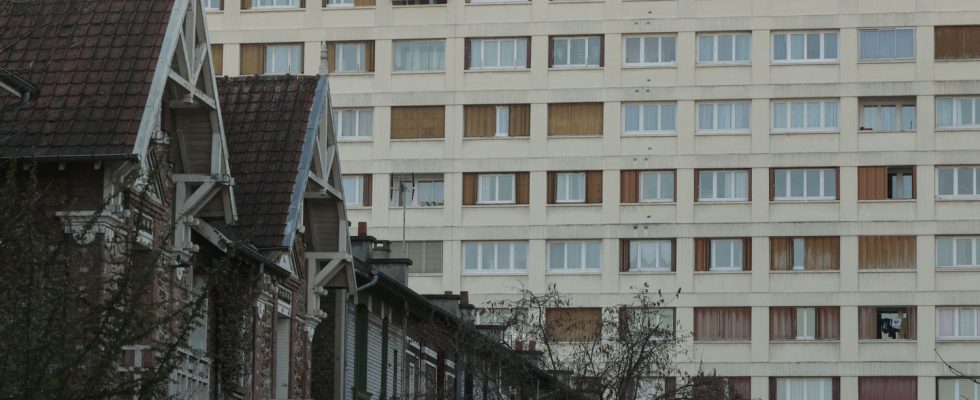While the government is considering a reform of social housing, the president of the National Rally and head of the list in the European elections affirms that “31 of the immigrants are today in HLM” and that “a real foreign preference” has been established in their attribution.
Published
Update
Reading time: 2 min

While the government plans to reform social housing in France, by encouraging the departure of tenants who have exceeded the income ceilings, the president of the National Rally and head of the list in the European elections considers that there is a problem in the allocation of social housing. “I remind you that there are 31% of immigrants who are in HLM today. And we know it, in social housing, particularly in the suburbs, under the weight of political decisions of part of the left “a real foreign preference has been established”, launched Jordan Bardella on BFMTV. True or false ?
31% of households where the reference person was born abroad live in social housing
The number is correct. 31% of households whose reference person was born abroad, therefore 31% of households considered “immigrants”, live in social housing, according to the latest data from INSEE, published in 2018 and relating to year 2016. For comparison, 14% of households where the reference person was born in France live in HLM. But this is not proof, as Jordan Bardella suggests, of a “foreign preference”. Firstly because “immigrants” and “foreigners” overlap two different realities. The immigrants were born outside France but some of them have since obtained French nationality. It is therefore French people who live in social housing, and not foreigners.
But origin is not an attribution criterion
Nor can we speak of “foreign preference” because these people did not obtain social housing due to their origin, this is not an allocation criterion. Social criteria must be met: income and family composition are the main criteria. However, immigrant families have lower incomes on average. They are also more often large or single-parent families. “Their resources, the composition of their family or their previous housing conditions more frequently correspond to the criteria for allocation of social housing.writes INSEE. Overall, these families have more difficulty finding housing, so they turn to social housing. This is a reality that we find in other European countries, as specified by the Abbé Pierre Foundation.
This does not mean that immigrant families occupy a large part of social housing. 31% of immigrants live in HLM but they do not occupy 31% of HLM. According to the latest housing survey carried out by INSEE, 2.7 million immigrant households live in France. Among them, 31% live in HLM. This therefore corresponds to approximately 840,000 social housing units occupied by an immigrant family. Furthermore, 25.3 million households are considered “non-immigrant”. Among them, 14% live in HLM. Around 3.5 million social housing units are therefore occupied by a family whose reference person was born in France.
The majority of residents in HLM were born in France
We can therefore say that around 80% of social housing is inhabited by families born in France. Immigrants occupy less than 20% of all HLM housing. Concerning foreigners, in 2017, the social union for housing estimated the share of social housing inhabited by foreigners at 12%. The Ministry of Housing, for its part, had indicated to World that, in 2015, 3.8% of social housing was allocated to Europeans and 13% to foreigners from outside the European Union.
